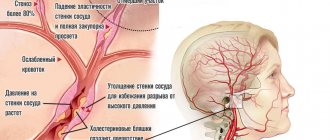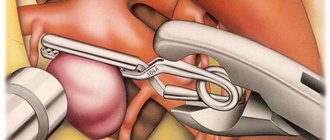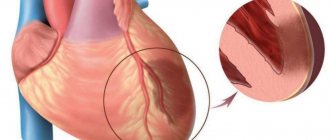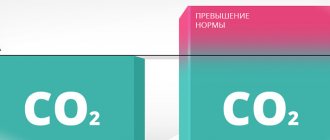Smoking marijuana is a very common type of drug addiction. It is generally accepted that this drug does not have a strong effect on the body. The myth that marijuana contains only beneficial substances was invented to justify addiction. The use of cannabinoids leads to destruction of the body, despite the hypothesis about the effectiveness of marijuana treatment for some diseases. People who use marijuana suffer from cognitive impairment, nervous system diseases, and lung problems. The effects of marijuana on the brain over the years can be completely unpredictable.
The main components of marijuana are tetrahydrocannabinol or THC and cannabidol or CBD. It is these substances that influence cannabinoid receptors in the central nervous system. When THC and CBD enter the blood, a person feels relaxation and euphoria, but at the same time concentration, coordination of movements, and short-term memory are impaired. Long-term use of marijuana “perpetuates” these effects and often leads to dementia.
Marijuana use is dangerous. There are no “light” substances. Under the influence of marijuana, irreversible changes occur in the brain.
Smoking marijuana during adolescence greatly affects the mental and physical development of a child. The body is not yet fully formed, and addiction to marijuana disrupts and inhibits all natural processes. First of all, the drug harms mental abilities. The system of motivation, the functions of memorizing information and learning are disrupted. The effect of marijuana on the formation of the reproductive system is also dangerous. 85% of teenagers who use marijuana later switch to stronger drugs.
The effect of cannabis and its derivatives on an adult is no less destructive. If a person smokes marijuana for several years, short-term memory is primarily impaired. Reproductive functions suffer. Mental disorders appear. The illusion that smoking marijuana can be stopped at any time creates the myth of no harm. If this were true, then cannabinoids would not be on the list of narcotic substances.
Content:
- Plant drug.
- How does marijuana affect blood pressure?
- Cannabis and the treatment of hypertension.
- Effect on ICP.
- Why does marijuana raise or lower blood pressure?
- Consequences of weed abuse.
The use of hemp around the world is growing. Many countries are legalizing cannabis for medical purposes. Doctors conduct various studies to understand how smoking marijuana affects the functioning of body systems and blood pressure. An unfavorable connection has already been established between “weed” and a wide range of cardiovascular diseases.
Overdose symptoms
Signs of marijuana poisoning appear several minutes or several hours after consuming the drug.
An overdose of marijuana is manifested by:
- dilation of the pupils, lack of their reaction to light;
- redness of the face;
- dry mucous membranes;
- increased appetite;
- hoarseness of voice;
- rapid heartbeat - pulse rate exceeds 100 beats per minute;
- high blood pressure;
- pain in the heart area;
- trembling in the body, convulsions;
- fever or chills;
- acute psychosis (delirium): foggy consciousness, anxiety, fear, obsessive states, delirium, hallucinations, disorientation in time;
- neurological changes: difficulty speaking and thinking, sweeping movements of the limbs;
- disorder of consciousness: stunned, the victim reacts poorly to external stimuli;
- pathological sleep (stupor).
A person can remain in this state for several days.
Plant drug
Marijuana is a psychoactive substance made from cannabis, more precisely from its tops and stem residues. Street names: plan, drap, bang, anasha, weed and others. Contains more than four hundred different chemical compounds that can cause hallucinations. Used by smoking, chewing, adding to drinks and food.
The most well-known and studied active component is tetrahydrocannabinol. It can accumulate and remain in the body for about a month , negatively affecting all internal organs.
When inhaling smoke, the euphoric effect occurs quickly; when ingested, it occurs gradually, but lasts longer. Causes high spirits, a feeling of vigor, sociability and talkativeness, a feeling of relaxation and comfort, while an acceleration of the pulse and redness of the eyes is noted. High doses cause drowsiness.
Naltrexone
35,000 pcs.
- Blocks the effects of heroin, codeine, methadone, tramadol, fentanyl, merfin
- Effect from 6 months
- Reliable alcohol coding
- Sustained remission
- Certified drugs
- Safe for health
- The ampoule sewing method is used
Order service
Get rid of psychological addiction to weed
At the drug treatment center, the patient receives full support from a psychotherapist or psychologist. A specialist, influencing the subconscious of a drug addict, leads him to thoughts about the harmfulness of addiction and the need for a healthy lifestyle. New directions in thinking are being formed, social connections are being restored, and so on.
Treatment of physical dependence
Physical dependence on anasha is expressed in the fact that the drug’s metabolites have already become involved in the body’s metabolic processes. The goal of treatment is to completely cleanse the organs of toxins, restore their functions, and treat associated diseases. In combination with psychological influence, a person receives powerful support, which has a huge impact on his consciousness.
How does marijuana affect blood pressure?
The results of the work of American scientists showed that smoking cannabis causes a threefold increase in the risk of dying from a hypertensive crisis , and each subsequent year of use increases this probability. In addition, a negative effect of marijuana on the effect of drugs used in cardiology was observed. It has been found that cannabinoids increase heart rate and can provoke the development of angina and heart attack.
Research shows that blood pressure after marijuana can either increase or decrease, depending on the dose, route of administration, frequency of use and degree of anesthesia. And also, on individual characteristics.
It has been observed that marijuana lowers blood pressure, causes bradycardia, relaxation and euphoria with a single test. Systematic use in large doses has a stimulating effect, and marijuana increases blood pressure due to increased vascular tone and increased cardiac output. Cannabis lovers often die from cerebral hemorrhages after taking the next dose due to increased intracranial pressure and vascular spasm, followed by their rupture.
Some smokers develop resistance to the initial effects, and subsequently experience a persistent hypotensive effect of marijuana on blood pressure immediately after ingestion.
Use of cannabis for medicinal purposes
Despite the harm of marijuana, doctors recommend using it to reduce the symptoms of serious diseases (if there are no contraindications). Thus, hashish treats, or increases the chances of recovery, the following diseases:
- vegetative-vascular dystonia, the main manifestations of which are associated with increased anxiety. In small doses, marijuana acts as a mild sedative with no side effects. It reduces anxiety, improves mood, and normalizes blood pressure. Frequent smoking of cannabis has the opposite effect - anxiety increases to the point of paranoia, and the likelihood of developing a hypertensive crisis increases;
- helps to facilitate the treatment of hepatitis C, which is considered one of the most lengthy and labor-intensive. Due to constant nausea and muscle pain, patients refuse treatment. Smoking cannabis minimizes these negative manifestations, helping to complete the course and defeat the disease;
- Paradoxically, controlled cannabis use protects the brain from widespread cellular damage after a stroke. The neuroprotective effect of the plant is being studied. Doctors believe that smoking cannabis protects brain cells from other types of damage, such as during a concussion.
If you do not abuse cannabis smoking, it has a beneficial effect on the body, relieving the uncomfortable symptoms of most diseases (including hypertension). But an excess of cannabinoids leads to serious consequences for the patient - impotence, even death.
Cannabis and the treatment of hypertension
There is evidence, backed by scientific research, that cannabis helps many people maintain blood pressure at a healthy level. This was confirmed by experiments by scientists from Israel who used it in a group of elderly people.
In the 90s, cannabinoid receptors and endocannabinoids were found in many cells and tissues, including platelets and fat, substances that are produced in the body and similar to plant ones, involved in the regulation of many systems. Anandamide is a natural version of THC. It has the ability to lower blood pressure as it relaxes blood vessels and improves blood flow.
Despite existing evidence suggesting that regular use of cannabis leads to a lasting reduction in blood pressure, doctors cannot yet confirm this as there are not enough studies in humans.
Treatment in the clinic is a guarantee of recovery from drug addiction
Drug addiction can be successfully treated in a clinic, but not when trying to get rid of addiction on your own. When the physical craving is removed, the psychological attraction to hashish will not disappear. A rehabilitation course is important, which helps solve the main problem of drug addiction – the psychological attraction to weed.
When undergoing rehabilitation techniques, a person develops a strong conviction of refusing doping, artificial and illusory ideas about the world and people around him. In the process of treating addiction, a psychotherapist looks for its causes, works through the person’s main problems, and looks for ways out of a stalemate.
After discharge, doctors accompany the patient and help him adapt to his new life. Relatives of the former drug addict are also involved in this process. Helping someone struggling to live sober is vital. The assistance of those who are not indifferent to the fate of a person will help him restore lost connections while using weed, make peace with friends and loved ones whom he offended while under the influence of drugs. And also find a suitable job, gradually come to a normal life, free from the use of doping, which gives a false impression of the surrounding reality and has a detrimental effect on human health.
If questions arise regarding treatment methods, programs used, or the need to call a narcologist to your home, the operators of the Svoboda RC will advise patients in detail. In case of categorical refusal of treatment, relatives of drug addicts are offered an intervention procedure aimed at forming the person’s voluntary conviction of the need for treatment. The high professionalism of psychotherapists helps addicted people comprehend what is happening and undergo inpatient treatment at the Svoboda clinic.
Drug addiction is not a death sentence: successful treatment is possible, but maximum efforts must be made to the process. First of all, the patient himself, as well as his relatives and the attending physician.
Why does marijuana raise or lower blood pressure?
This dual potency of the drug can be influenced by the type of plant and its ratio of tetrahydrocannabinol (THC) to cannabidiol (CBD). Medical cannabis varieties contain more CBD, which has a strong therapeutic effect in the form of relieving pain, nausea and lowering blood pressure.
Cannabidiol relieves spasms, causes pleasant relaxation and calms, relieves nervous tension and muscle tension, without clouding consciousness. But, with an overdose, fainting, a critical decrease in blood pressure to the point of collapse and coma, and disorders of the autonomic system are possible .
If tetrahydrocannabinol predominates in the variety, then marijuana increases blood pressure due to its following properties:
- strengthening the contractile function of the myocardium;
- increased heart rate;
- increase in circulating blood volume.
This leads to the development of symptomatic arterial hypertension, as during exercise. Accumulating in protein and adipose tissue, tetrahydrocannabinol provokes constriction of peripheral blood vessels and spasms. Blood begins to pump intensively through the brain and all internal organs, and the pressure in them begins to increase. THC acts on brain receptors as a stimulant and can cause an additional release of adrenaline into the blood, which increases blood pressure.
Consequences of weed abuse
The occurrence of consequences depends on a number of factors:
- smoker's age;
- quantity and form of use;
- state of mind;
- genetic predisposition;
- general health;
- combined use with other psychoactive drugs.
Long-term association with “grass” causes a decrease in memory, learning, and intelligence, which does not recover even after quitting the drug. Beginning use in adolescence poses a risk of developing a schizophrenia-like disorder. Smoking cannabis has a negative impact on your health. This manifests itself in the following ways:
- formation of psychological dependence;
- decreased ability to drive vehicles or perform certain types of work involving moving elements with increased danger;
- damage to the liver and kidneys - edema, hepatitis, cirrhosis, acute renal and liver failure;
- various diseases of the respiratory system, the development of chronic bronchitis;
- pathological changes in the brain;
- disappearance of the need for communication and desires;
- reproductive dysfunction - cannabis blocks the formation of testosterone, potency and libido decrease.
- cardiovascular disorders, angina pectoris, heart failure when using the drug every day; stroke, heart attack;
- hyperemia of the eyeballs with intraocular hypertension;
- hypertensive crisis. The use of antihypertensive drugs may cause loss of consciousness.
Cannabis slowly destroys the body and affects personality changes; in order to avoid serious complications, it is necessary to completely stop smoking it and consult a narcologist in time.
First aid for overdose
In case of drug overdose, the following must be done:
- First of all, calm the patient down and talk to him continuously.
- Organize a calm environment: if possible, protect the patient from loud, sharp sounds.
- Unfasten the victim's clothing and open the window, thereby providing fresh air.
- Give the patient strong tea with sugar or honey.
- In order to reduce the fever, you can place a towel soaked in cold water on the patient's forehead.
- If a narcotic substance enters the body with food, the stomach should be rinsed and activated charcoal should be given.
- If the victim is unconscious, it is necessary to make every effort to make him come to his senses: shake him, rub his ears, pinch him.
- An unconscious person must be placed on his side.
After providing first aid, you need to call an ambulance. In order to stop excessive excitement, the doctor will administer Haloperidol.
Specialists will take the necessary measures, after which the respiratory and cardiovascular systems will begin to function normally. In case of severe poisoning, the victim will be hospitalized in the narcological department and hemosorption will be carried out.
If you overdose on marijuana, a person should not be left alone until they feel better.
Prices for Ultramed clinic services
Literature:
- Ovcharova L. G. Causes and consequences of bad habits: textbook / L. G. Ovcharova, L. S. Khoroshilova, Z. A. Kurbatova; Ministry of Education and Science of the Russian Federation, State. higher educational institution prof. education “Kemerovo State. University". – Kemerovo: Kuzbassvuzizdat, 2006. – 115 p.
- Drugs and drug addiction: history, background, consequences / City Hall of Yaroslavl, City Scientific and Methodological Center for Social Policy; [under. ed. S.V. Zueva]. – Yaroslavl: City Scientific and Methodological Center for Social Policy, 2007. – 55 p.
- Drugs: properties, action, pharmacokinetics, metabolism: textbook / N. V. Veselovskaya [etc.]. – 3rd ed., revised, corrected. and additional – Moscow: Narconet, 2008. – 262 p.











